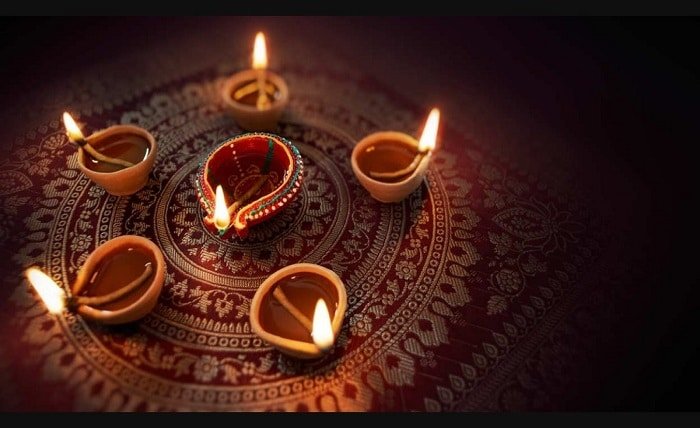Celebrating Diwali: The Festival of Lights

Introduction
Diwali, known as the Festival of Lights, is one of the most beloved and widely celebrated festivals in Hindu culture. It symbolizes the victory of light over darkness and good over evil. This blog post explores the deep cultural and spiritual significance of Diwali, its traditional and modern celebrations, and how it fosters community spirit and personal reflection.
The Historical Roots of Diwali
Diwali has a rich history intertwined with numerous legends and stories from Hindu mythology. The most popular narrative is that of Lord Rama’s return to Ayodhya after 14 years of exile and his victory over the demon king Ravana. This historical context sets the stage for the celebrations and the various rituals associated with the festival, which aim to honor the triumph of good over evil.
Significance of the Five Days of Diwali
Diwali is celebrated over five days, each with its own significance and set of rituals:
- Dhanteras: The festival begins with Dhanteras, a day that celebrates wealth and prosperity.
- Naraka Chaturdasi: The second day marks the defeat of the demon Naraka by Lord Krishna.
- Lakshmi Puja: The third day is the main day of Diwali, dedicated to the worship of Goddess Lakshmi.
- Annakut: The fourth day is marked by the preparation of various foods and offerings to God.
- Bhai Dooj: The festival concludes with a day dedicated to the bond between brothers and sisters.
Traditional Diwali Decorations
Decorations play a crucial role in Diwali celebrations. Homes and workplaces are adorned with Rangoli, intricate designs made on the floor using colored powders, flowers, and rice. Diyas (clay lamps) and candles are lit to illuminate every corner, symbolizing the warding off of darkness with light.
The Rituals and Practices
Several key rituals are observed during Diwali. These include:
- Lakshmi Puja: A prayer ceremony dedicated to Goddess Lakshmi to invite prosperity and wealth.
- Fireworks and Firecrackers: These are set off to drive away evil spirits and celebrate the joyous occasion with light and sound.
- Exchange of Sweets and Gifts: Sharing sweets and gifts among family and friends is an essential part of Diwali, fostering a sense of community and affection.
Diwali Cuisine: Feasting and Festivities
Food is central to Diwali celebrations, with each region of India offering its own unique dishes. Sweets like ladoos, barfis, and jalebis are ubiquitous, as are savory snacks. This section delves into traditional Diwali recipes and how families come together to prepare and enjoy these festive treats.
Diwali Fashion: Colors and Styles
Fashion is another vibrant aspect of Diwali, with people donning new and colorful clothing. Traditional attire such as sarees, lehengas, and kurta-pajamas are popular. This subheading explores the trends in Diwali fashion and how they contribute to the festivity’s spirit.
Diwali Across the Globe
While Diwali has its roots in Hindu culture, it is celebrated worldwide, reflecting local influences and traditions. This section compares Diwali celebrations in different countries, including the unique ways in which the festival is observed in places like Nepal, Sri Lanka, and among the diaspora in the United States and the United Kingdom.
Environmental Impact of Diwali and Sustainable Practices
The environmental impact of Diwali, particularly due to fireworks and increased waste, is a growing concern. This section discusses sustainable practices such as using eco-friendly decorations, minimizing the use of firecrackers, and alternative ways to celebrate that are more environmentally friendly.
Black Friday Sale: Unbeatable deals and discounts on your favorite products, happening once a year!
Modern Diwali Celebrations and Technology
Technology has changed how Diwali is celebrated, from eco-friendly fireworks to virtual temple darshans and online gift exchanges. This part of the blog explores how technology is being integrated into traditional practices, making celebrations more accessible to those away from home.
Safety Tips for Diwali
With the joyous celebrations come safety concerns, especially related to fireworks and lamps. This section provides essential safety tips to ensure that Diwali is celebrated without accidents, emphasizing the importance of supervised use of firecrackers and safe lighting practices.
Conclusion
Diwali, with its glorious array of lights, delicious feasts, and joyous gatherings, serves as a time to celebrate life, its victories, and its seasonal renewals. As we embrace the traditions and rituals of Diwali, we also adapt to new practices that make this festival meaningful to everyone involved. Whether through spiritual, familial, or social engagements, Diwali remains a profound time for reflection, joy, and community celebration.
FAQs
1. Why is Diwali called the Festival of Lights? Diwali is called the Festival of Lights due to the significant use of lights, lamps, and firecrackers to symbolize the victory of light over darkness and knowledge over ignorance.
2. What is the best way to experience Diwali as a non-Hindu? The best way to experience Diwali as a non-Hindu is to participate in the public events and community gatherings that take place during the festival, which often include lights, food, and cultural performances that are accessible to everyone.
3. Can Diwali be celebrated in an eco-friendly manner? Yes, Diwali can be celebrated in an eco-friendly manner by opting for biodegradable and natural decorations, minimizing the use of firecrackers, and using LED lights for illumination.
4. What are some traditional Diwali gifts? Traditional Diwali gifts include sweets, dry fruits, apparel, and decorative items. Gifting silver and gold is also considered auspicious during Diwali.
5. How long does Diwali last? Diwali is typically celebrated over five days, with each day having its own significance and set of rituals and traditions.




